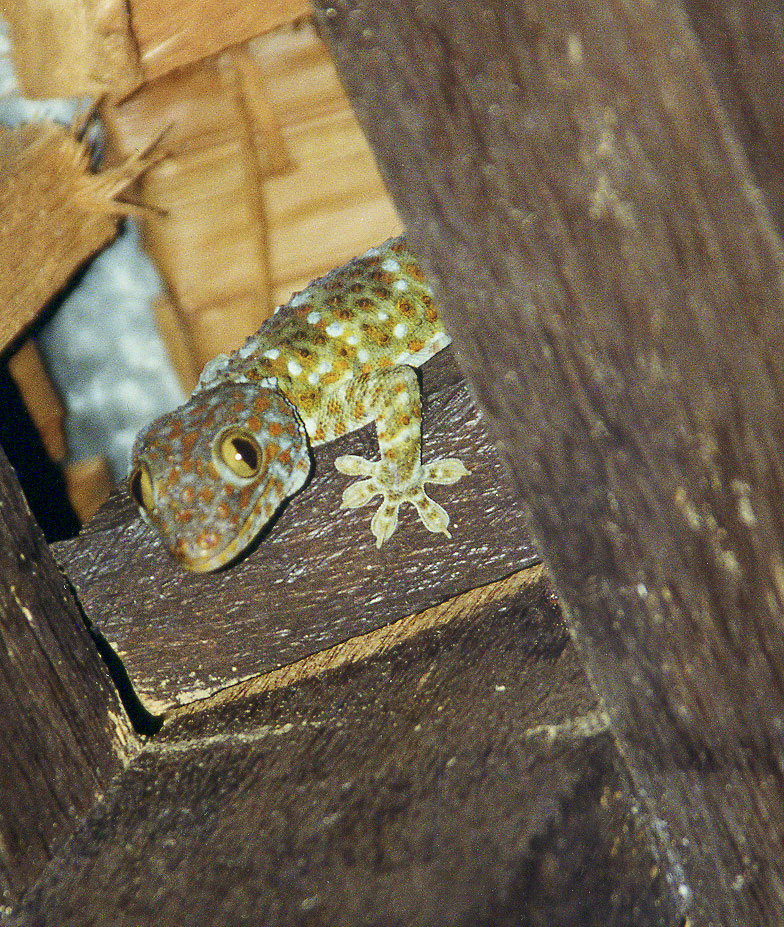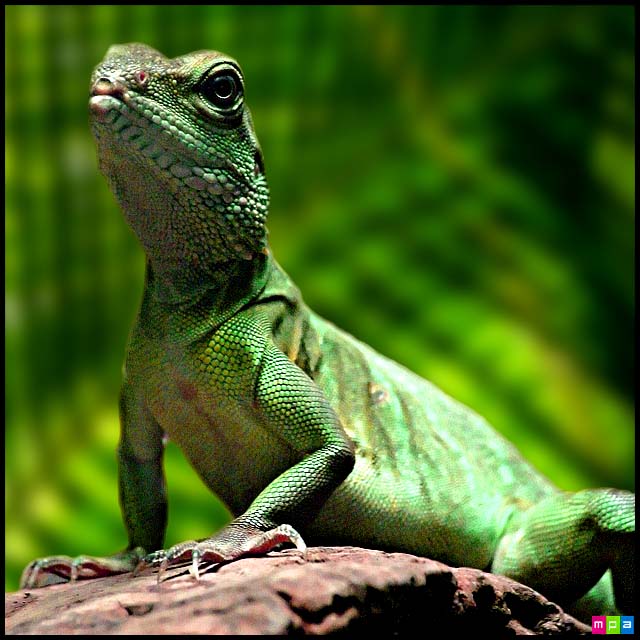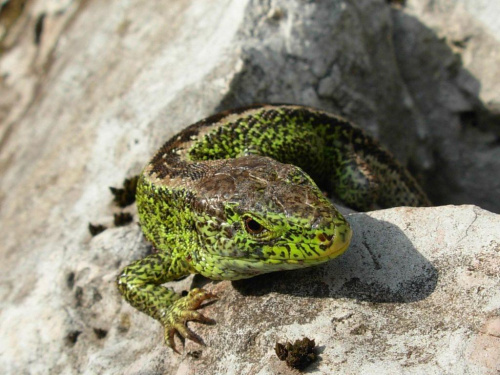Lizard - Evolution and relationships 2
2010-12-30 @ 18:05:57
The Diapsids, possessing one temporal fenestra before the eye and one behind it, continued to diversify. One branch, the Archosaurs, retained the basic Diapsid skull, and gave rise to a bewildering array of animals, most famous being the crocodilians, the pterosaurs, the dinosaurs and their descendants, birds. The Ichthyosaurs and Plesiosaurs radiated from the same basal Diapsid group. The smaller Lepidosaurs which would give rise to the lizards began to reduce the skull bones, making the skull lighter and more flexible. The modern Tuatara retains the basic Lepidosaur skull, distinguishing it from true lizards in spite of superficial similarities. Squamates, including snakes and all true lizards, further lightened the skull by eliminating the lower margin of the lower skull opening. 
Lizard - Evolution and relationships 1
2010-12-30 @ 17:57:11
The retention of the basic 'reptilian' amniote body form by lizards makes it tempting to assume any similar animal, alive or extinct, is also a lizard. However, this is not the case, and lizards as squamates are part of a well-defined group. The earliest "lizard" was superficially lizard-like, but had a solid, box-like skull, with openings only for eyes, nostrils, etc. (termed Anapsid). Turtles retain this skull form. Early anapsids later gave rise to two new groups with additional holes in the skull to make room for and anchor larger jaw muscles. Those with a single hole, the Synapsids, gave rise to the superficially lizard-like Pelycosaurs, which include Dimetrodon and the Therapsids, including the Cynodonts, from which the modern mammals would evolve. 
Lizard - Physiology 2
2010-12-30 @ 16:52:43
 A particular innovation in this respect is the dewlap, a brightly colored patch of skin on the throat, usually hidden between scales. When a display is needed, the lizards erect the hyoid bone of their throat, resulting in a large vertical flap of brightly colored skin beneath the head which can be then used for communication. Anoles are particularly famous for this display, with each species having specific colors, including patterns only visible under ultraviolet (UV) light, as lizards can often see UV.
Lizard - Physiology 1
2010-12-30 @ 16:44:08
Sight is very important for most lizards, both for locating prey and for communication, and, as such, many lizards have highly acute color vision. Most lizards rely heavily on body language, using specific postures, gestures, and movements to define territory, resolve disputes, and entice mates. Some species of lizard also utilize bright colors, such as the iridescent patches on the belly of Sceloporus. These colors would be highly visible to predators, so are often hidden on the underside or between scales and only revealed when necessary. 
Lizard
2010-12-30 @ 16:32:51
Lizards are a very large and widespread group of squamate reptiles, with nearly 3800 species, ranging across all continents except Antarctica as well as most oceanic island chains. The group, traditionally recognized as the suborder Lacertilia, is defined as all extant members of the Lepidosauria which are neither sphenodonts nor snakes. While the snakes are recognized as falling phylogenetically within the anguimorph lizards from which they evolved, the sphenodonts are the sister group to the squamates, the larger monophyletic group, which includes both the lizards and the snakes. 
This is english blog. User writes in english. If you would like to have blog like this, you can register your own for free. Register your own english blog
Język angielski matura z angielskiego Gramatyka angielska
|
Archive
2011 February (2) 2010 December (5) > 2010.12.30 (5) November (4) October (4) September (1)
|




 A particular innovation in this respect is the dewlap, a brightly colored patch of skin on the throat, usually hidden between scales. When a display is needed, the lizards erect the hyoid bone of their throat, resulting in a large vertical flap of brightly colored skin beneath the head which can be then used for communication. Anoles are particularly famous for this display, with each species having specific colors, including patterns only visible under ultraviolet (UV) light, as lizards can often see UV.
A particular innovation in this respect is the dewlap, a brightly colored patch of skin on the throat, usually hidden between scales. When a display is needed, the lizards erect the hyoid bone of their throat, resulting in a large vertical flap of brightly colored skin beneath the head which can be then used for communication. Anoles are particularly famous for this display, with each species having specific colors, including patterns only visible under ultraviolet (UV) light, as lizards can often see UV.
